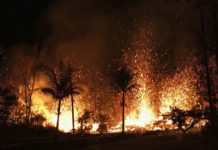Super blue blood moon: when and where to see the rare lunar eclipse
Michael Slezak
Blue moon, super moon and blood moon will all coincide in 2018 for the first time since 1866.
People from Moscow, via Sydney, to Washington DC will be given a rare celestial treat on Wednesday as three lunar phenomena coincide. Weather permitting, of course.
A blue moon (a second full moon in a calendar month), a super moon (when the moon is unusually close to Earth, making it bigger and brighter) and a blood moon (a moment during an eclipse when the moon appears red) will all coincide for the first time since 1866.











